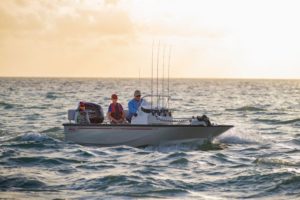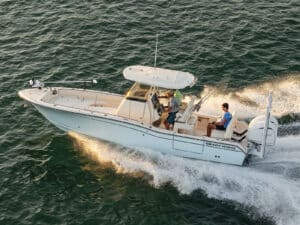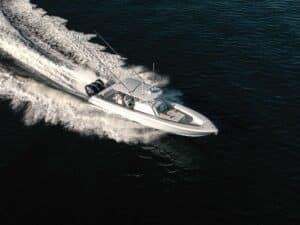
I remember my first set of trim tabs and how the system smoothed the ride of my 22-foot, outboard-powered center-console. It rode like a different boat, especially when facing a head sea. That was in 1990, and the experience quickly converted me into a believer.
That belief has strengthened with the advent of advanced trim tabs from brands such as Bennett, Humphree, Lenco, Livorsi, Mercury Racing, SeaStar by Dometic, Volvo Penta and Zipwake. Newer systems offer far more features than the pair installed on my boat three decades ago.
Yet all trim tabs work on the same tried-and-true principle of using adjustable control surfaces on the transom to create stern lift to improve hole shot, adjust a boat’s trim angle and correct for a list while underway.
However, the nature of the tabs and controls have undergone a revolution—changes so dramatic that they might leave old-school captains scratching their heads, albeit pleased with the results.
Tab Design
In some cases, the tabs themselves have morphed into vastly different physical shapes. Tabs from brands such as Humphree, Volvo Penta and Zipwake utilize blades (in a wide range of widths and styles to accommodate different sizes and types of boats) that deploy straight down from the surface of the transom versus conventional plates that extend horizontally.
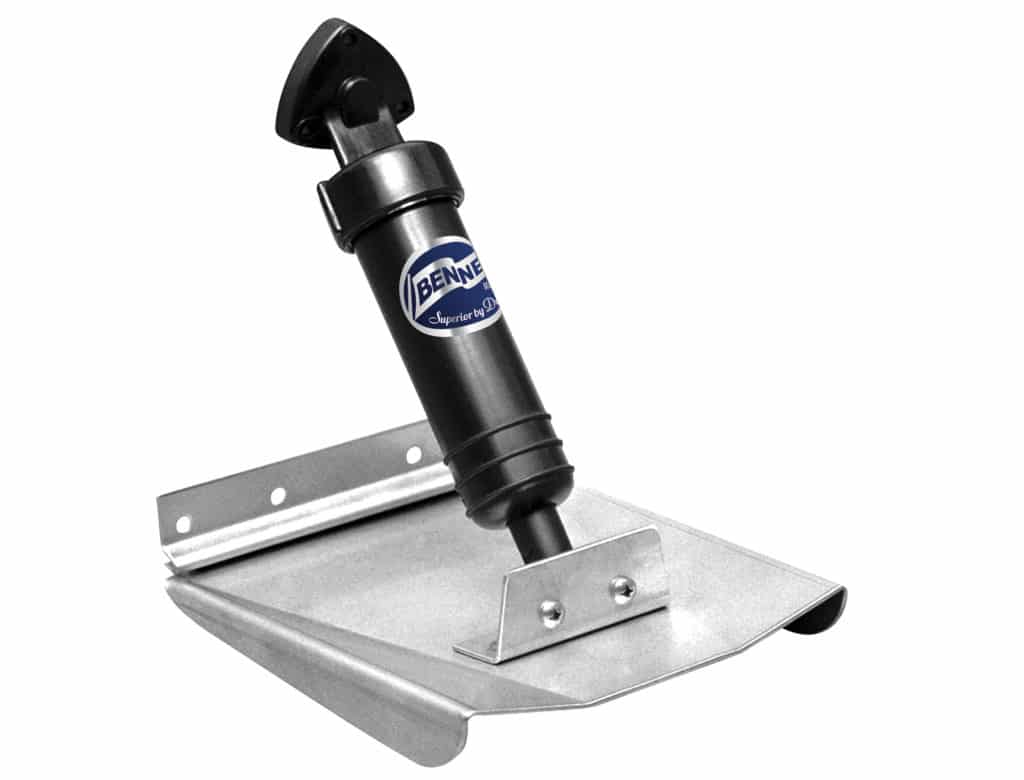
Known as “interceptors,” the vertical tabs create hydrodynamic lift by intercepting water flow under the boat, thus generating lift acting on the hull rather than the tab. With traditional systems, the plates serve as the lifting surface.
“Very little blade is needed to create lift,” says Jamie Simmons, product manager for Imtra Corp., which offers the Zipwake interceptor system in the United States.
As little as 1 ½ inches of downward tab might be typically needed at cruising speed, he points out.
Studies by Humphree and Zipwake indicate that interceptors offer less drag than plates and thus contribute to greater fuel efficiency. “Zipwake interceptors generate 40 percent less drag,” Simmons says. Each tab is made from a Teflon-based composite material.
That said, plate tabs remain the most popular choice on boats today due to lower costs and easier installation than interceptors.
They are used by brands such as Bennett, Lenco, Dometic and Mercury, with a number of plate sizes and styles offered by each company to suit a wide variety of hulls.
Dometic decided to use stainless-steel plates for its new SeaStar Digital Trim Tab System in part to ease installations on existing boats. “A big part of our decision was to make it easy to retrofit our Advanced Trim Tab system to a boat with an older system,” says Brian Dudra, vice president and general manager for Dometic-Vancouver.
Totally Electric
While early trim tabs from brands such as Bennett relied on an electro-hydraulic system to deploy and retract the tabs, most tabs today are all electric.
Advances in electric drives facilitated this, says Dudra, who points out that the SeaStar trim tab is 100 percent electric and controlled using digital CAN signals. The sealed actuators use high-speed motors combined with an inverted composite ACME screw, as opposed to steel ball screws used in other systems.
“The SeaStar actuator can withstand loads of over 1,000 pounds exerted either up or down,” Dudra says. The ability to resist downward loads is particularly important when backing up to wire a fish because water pressure pushes down on the plates, or if a swimmer steps on a tab while boarding.
Electric systems allow for easier integration of sensors. Each SeaStar actuator, for example, houses a microprocessor that senses the exact position of the tab and feeds that information to a controller at the helm, resulting in precise, repeatable control. Some systems from Bennett, Humphree, Lenco and Zipwake offer similar sensors, and some estimate the position based on the run time of the trim-tab motor.
Control Central
Trim-tab controls have changed too —some bearing little resemblance to the traditional twin rocker switches associated with tabs of yore.
SeaStar’s compact controller, for instance, lets you correct for a list by turning a dial. If the boat leans to starboard, simply turn the dial to port to adjust it on an even keel. A series of LEDs show the angle of the tabs. A button at the top deploys both tabs simultaneously to put the bow down, and a button at the bottom brings the tabs up.

The Zipwake controller goes a step further with a 2.4-inch color display that provides continuous feedback on boat speed and pitch-and-roll angle, as well as the position of the interceptor blades. The panel includes two control wheels—one to roll the hull to port or starboard to correct a list, and another to adjust the trim angle.
Most systems allow for the plug-and-play addition of another controller for adjusting the tabs from a second helm such as a tower station.
Full Auto
Many of today’s trim-tab systems can automatically adjust the boat’s trim angle for optimal hole shot and best fuel efficiency. The SeaStar Digital Trim system, for example, integrates with electric shift-and-throttle systems to offer Holeshot Mode. Once this preset is selected, it automatically deploys the tabs to lift the stern and keep the bow down as the boat accelerates from a standing start. Then as the boat reaches its cruising speed, the tabs readjust for best ride or fuel efficiency.
This system also integrates with the SeaStar Optimus Joystick control to retract the tabs when using the joystick to improve low-speed-steering performance. It networks with Optimus Electric Steering to control the tabs when engaging in turns to optimize trim during lateral maneuvers.
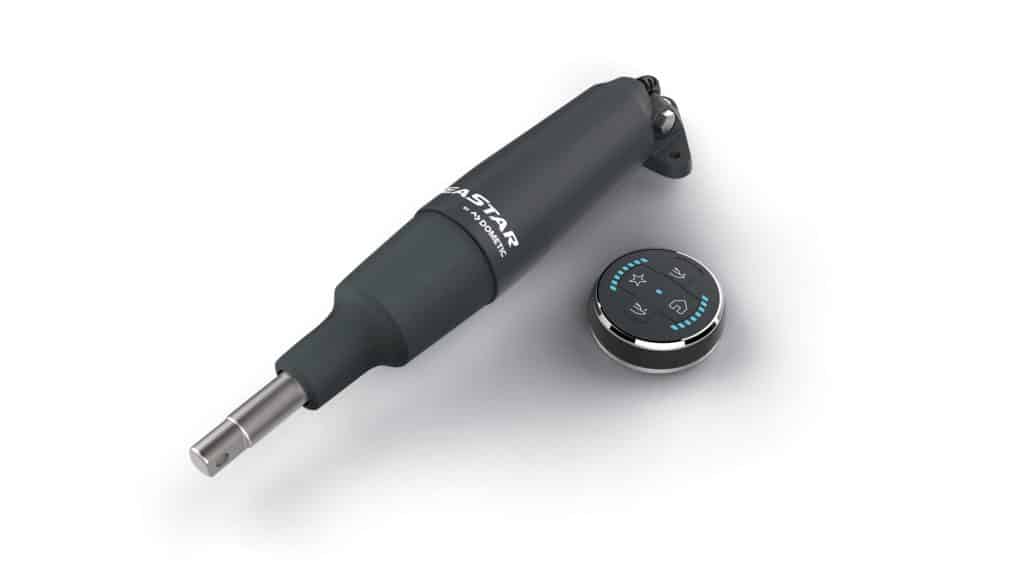
The Zipwake system uses built-in GPS, a 3D gyro and a 3D accelerometer to automatically and continuously adjust the boat’s pitch and roll to create the most comfortable ride and ensure the best possible economy for any given speed and sea condition.
Even when using the automatic function of these systems, the helmsman can still manually adjust the tabs. “Most users fine-tune the ride with tabs to compensate for varying loads and to further smooth out the ride,” Simmons says.
Unique Advantages
Interceptor-style tabs offer two unique advantages. For one, fully retracting the tabs while fishing eliminates obstructions that might snag or cut a line—an option that’s not possible with plate-style tabs.
Second, you can run as many as six interceptors on the transom of a boat (versus just a single pair of plate-style tabs), which increases the number of control surfaces for fine-tuning the ride. However, such installations are generally reserved for inboard boats where the tabs are abaft the propellers and won’t create cavitation issues as they might with outboards.
Read Next: How to Create the Most Comfortable Boat Ride
“Two interceptors (placed toward the outside edge of the transom) are more than sufficient on most boats” Simmons points out. These tabs are also recommended for multihull boats (aka cats), due to the need to place the control surfaces outboard of the tunnel/engines.
Trim tabs have evolved mightily since the day I first used them on my boat. They’re smarter and easier to use than ever before, and that only reinforces my belief that virtually any hull will run smoother, safer and more efficiently with a set of tabs.

